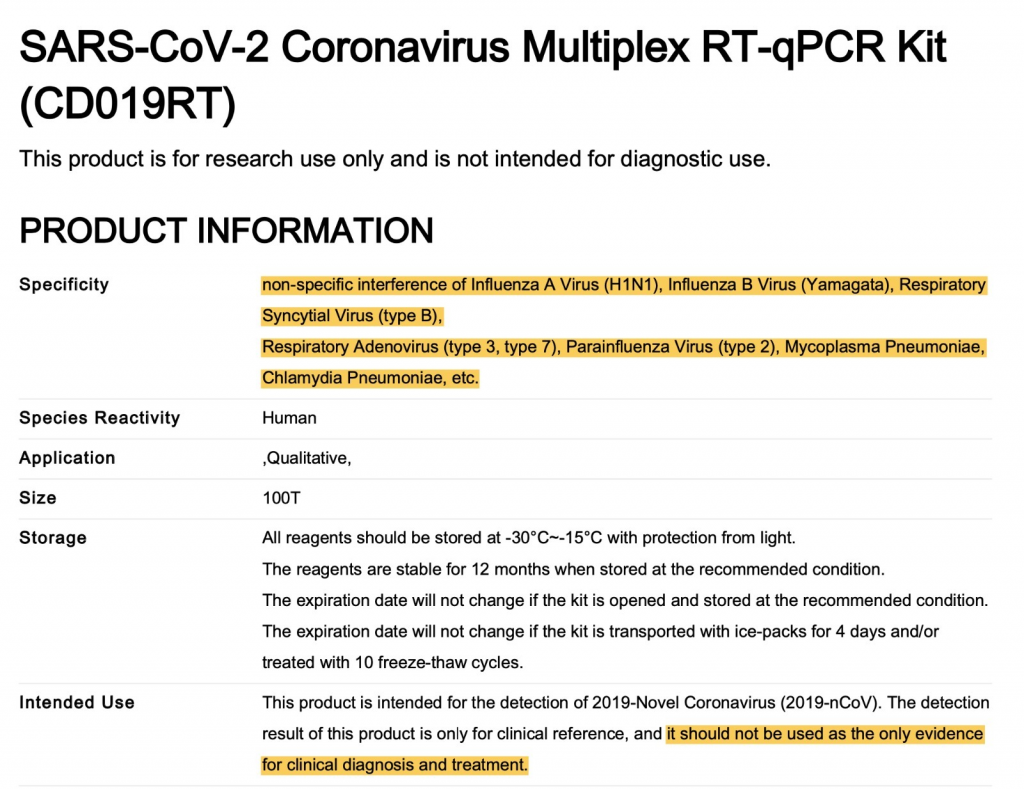
I’ve written already on why there is abundant reason not to trust PCRs for diagnosis of the pandemic status of SARS-CoV-2. I’ve added that over-reliance on these methods can easily lead to psuedo-epidemics.
This time I want to present you with other factual sources on PCR.
First, the picture above shows you part of a data sheet of a PCR kit for SARS-CoV-2. Notice the highlights:
- the test can suffer interference from a host of other common seasonal viruses
- the test should not be used as a sole evidence for clinical diagnosis and treatment
Second, article in the British Medical Journal clearly states:
RT-PCR tests can detect viral SARS-CoV-2 RNA in the upper respiratory tract for a mean of 17 days; however, detection of viral RNA does not necessarily equate to infectiousness, and viral culture from PCR positive upper respiratory tract samples has been rarely positive beyond nine days of illness.
Third, the Oxford Centre for Evidence Based Medicine’s article clearly explains that testing positive to PCR does not equate to infection:
A PCR test might find the virus it was looking for. This results in a PCR positive, but a crucial question remains: is this virus active, i.e. infectious, or virulent? The PCR alone cannot answer this question. The CEBM explains why culturing the virus is needed to answer this question:
“In viral culture, viruses are injected in the laboratory cell lines to see if they cause cell damage and death, thus releasing a whole set of new viruses that can go on to infect other cells.”
0 Comments
4 Pingbacks